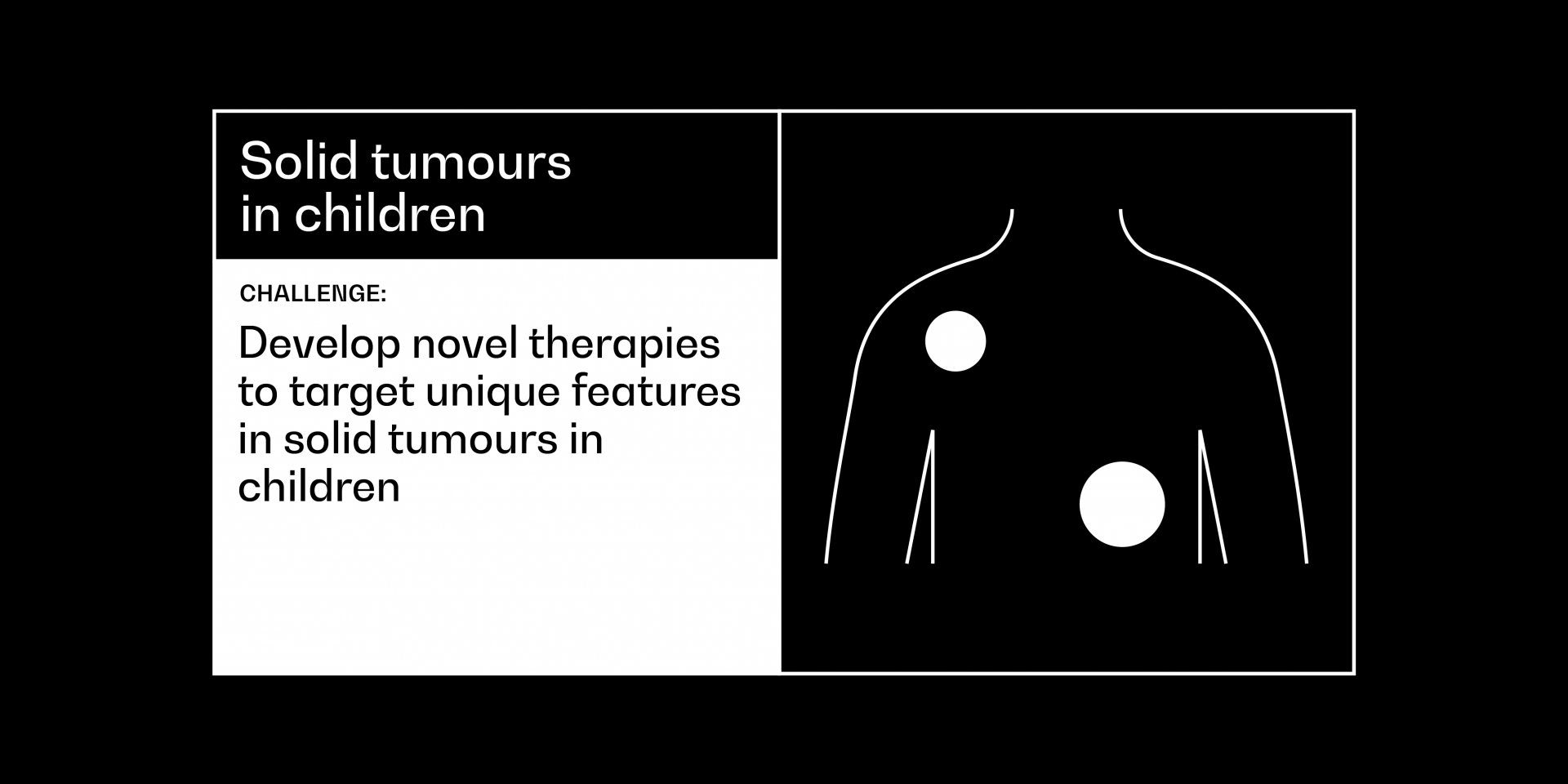
Solid tumours in children
Challenge: Develop novel therapies to target unique features in solid tumours in children
ACTIVE TEAM: NexTGen
This was a challenge in an earlier round, we are not currently accepting applications for this challenge.
Context
Cancer is a leading cause of death by disease in children globally, and progress in the treatment of children with solid tumours, which includes brain tumours, has stalled. For those children who relapse, there are fewer treatment options available, meaning the outlook is often poor, and outcomes for some paediatric cancers have not improved in more than 30 years.
Despite advances in understanding the biology of some paediatric cancers, standard curative treatment regimens rely primarily on cytotoxic agents, developed decades ago, and radiotherapy. Such therapies induce severe late, long-term effects, including second malignancies, cardiac, neurologic and skeletal toxicity, and infertility.
Barriers and opportunities
Tumours arising in children are fundamentally distinct from those that occur in adults as they often represent disordered development of embryonal tissues. While many fundamental pathways that drive oncogenesis in paediatric solid tumours, including brain tumours, have been defined, effective targeted therapeutics have not been developed.
This is in part because the known oncogenic targets in children’s solid tumours characteristically involve mutated or overexpressed transcription factors and/ or epigenetic proteins, which are largely considered “undruggable”. In addition to the challenge surrounding drug development, there has also been a lack of focus on paediatric solid tumours compared to adult cancers by the biotechnology and pharmaceutical industries, due to the small market size.
Examples of the types of questions that could be addressed in this challenge include but are not limited to:
- Can we develop a deeper understanding of the biology of children’s solid tumours to identify the best approach to develop novel therapies that target their unique biological features, e.g. mutant oncoproteins or transcription factors?
- Can immunotherapeutic approaches be developed which are effective in the paediatric solid tumour setting?
Vision and Impact
Although there are some large-scale initiatives in this area, research is often fragmented. Therefore, multinational and truly multidisciplinary, disruptive proposals are needed.
This challenge aims to bring together multidisciplinary teams that could include cancer biologists, developmental biologists, clinical investigators, animal modellers, medicinal chemists and immunologists.
A successful application will discover, develop and optimise novel therapeutic(s) and launch early phase testing in small clinical trial(s) that incorporate relevant pharmacokinetic and biologic endpoints to understand the basis for success or failure of the therapy.
Development of effective targeted therapeutics for paediatric solid tumours will improve survival for children diagnosed with cancer and will diminish the lifelong toxicities often experienced by survivors of these diseases.
Plain language summary: Why solid tumours in children?
Cancer remains a leading cause of death by disease in children globally. Despite progress in understanding the biology of some children’s cancers, the way we treat these diseases – especially solid tumours – has barely changed in over 30 years. Available therapies can have very severe, long-term side effects. We desperately need more specific and effective treatments that cause fewer long-term side effects for children living with these cancers.
We are beginning to understand that solid tumours in children are very different from those in adults. If we could understand more about these differences and find ways of targeting them, we could create new drugs or reuse existing ones to better treat children’s cancer. This is what this Cancer Grand Challenge is all about – taking a different approach to find new ways to help children survive solid tumours.